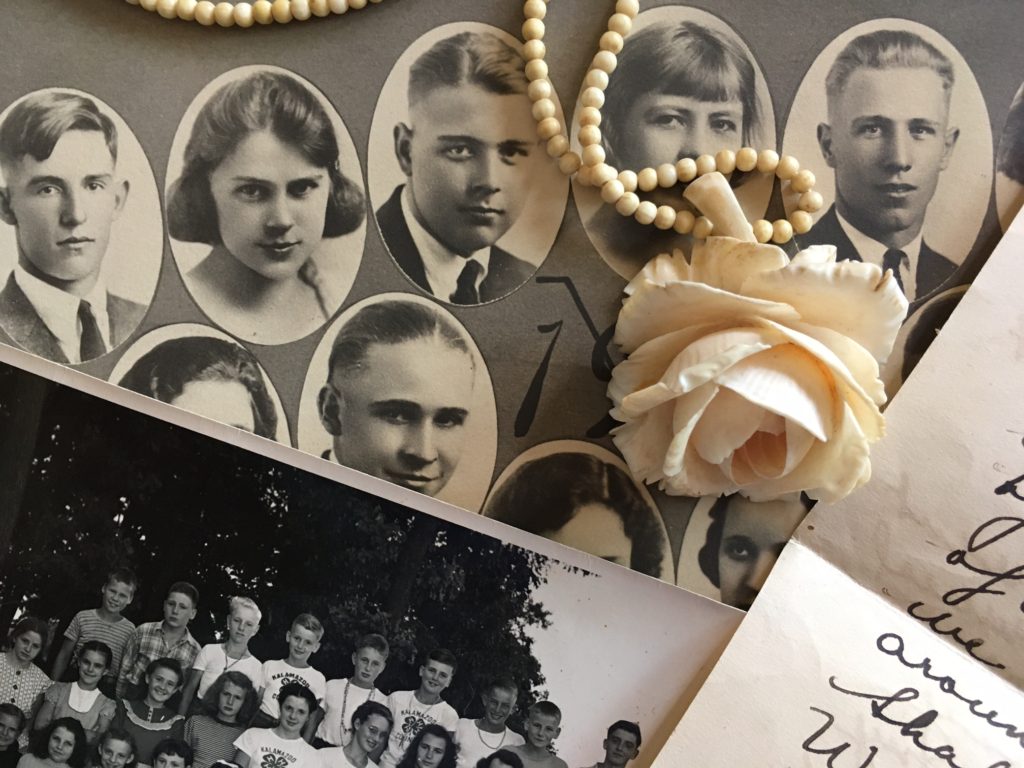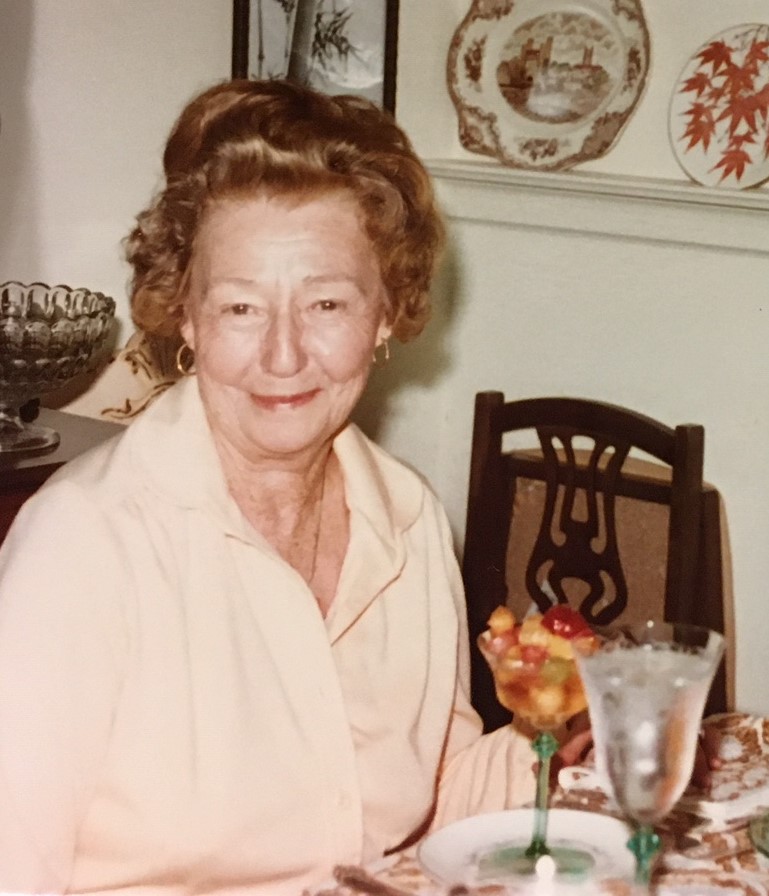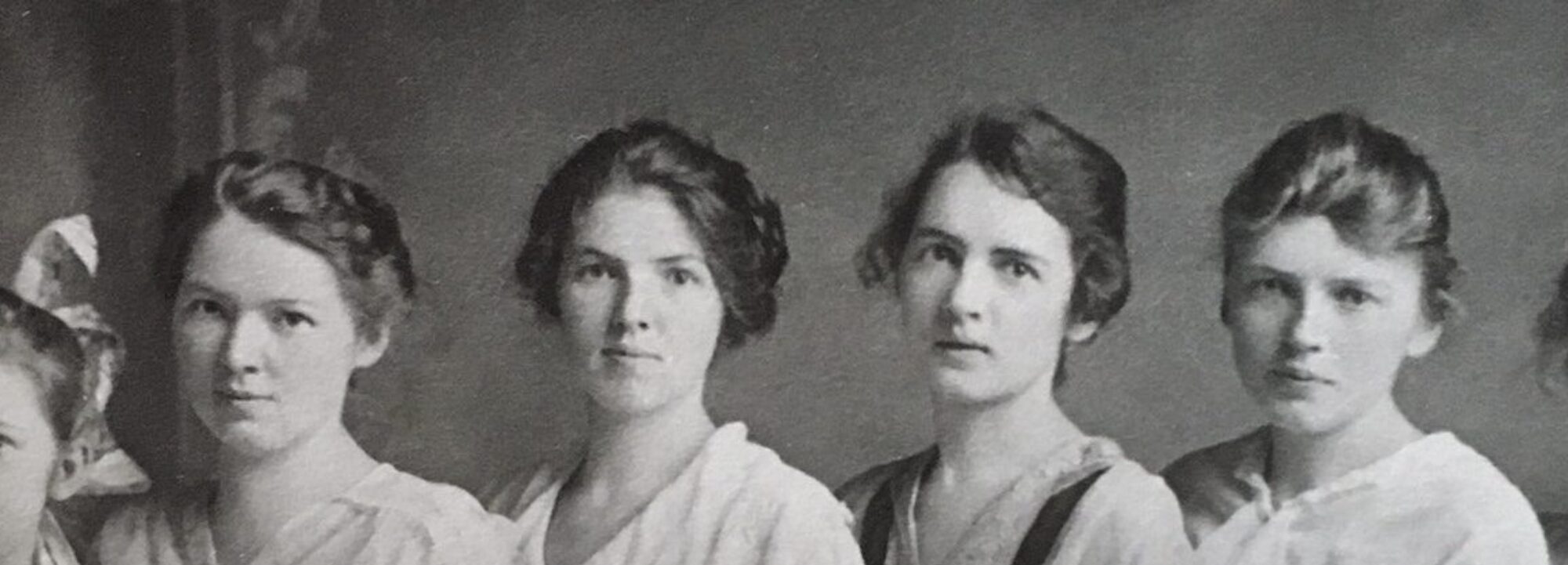I am a keeper of memories: great-grandmother’s canning jars, Aunt Ethel’s china, grandma’s gingerbread cookie cutters. Labeled containers stand in our basement holding newspaper-wrapped tidbits from times past: bits and pieces of childhood tea sets; a great-aunt’s christening gown; elaborate, empty perfume bottles.
When my grandmother died twenty years ago, I was the designated recipient of an old trunk filled with mementos from her life. She trusted that I would know what to keep and what to discard: What to share and what to keep private.
Her parents’ courtship letters fill a brown lunch bag. Sympathy cards sent after my grandfather’s death sleep silently in a shirt box. Her childhood and college scrapbooks crumble and wait. Faces I recognize, and many I can’t identify, are suspended in sepia and black-and white photographs.

I haven’t begun archiving, digitizing and sharing the pieces of my family’s history.
And soon my husband and I will be the caretakers of his family’s past, as his mother, the last of her generation, died in January.
It is emotional. It is cumbersome. It is overwhelming.
I need to get started.
Many of our friends find themselves in the same situation: the responsibility and care of a family’s history which continues to grow through the decades.
There are the obvious generational differences. Our children operate electronically. They take massive amounts of pictures – beautiful pictures – with their cell phones. These photos don’t take up physical space. A few are printed, but most are stored digitally.
That’s just not how I operate. I like something I can see. Touch. I like a calendar. An old-school planner.

When it is this next generation’s turn to take the baton of family treasures, they will not want most of it.
I can respect that, but I sure don’t understand it.
My thirty-somethings and most of their friends are minimalists, as evidenced by the lovely, discarded china and crystal at my favorite resale shop. I long to adopt the odd Haviland plates or the Jadeite coffee mugs that find themselves abandoned on the back wall’s clearance shelf. I wish to carefully launder and display the hand-embroidered pillowcases and dresser scarves tangled at the thrift store.
I will be the last in my family willing to use and store impractical treasures: dishes or glassware that can’t be quickly microwaved or run through the dishwasher; trinkets and figurines that need regular dusting; uncomfortable Victorian chairs with lovely carved frames.
My best friends also confess similar attachments. Several months ago, one of our friends put a picture of an unwanted set of Candlewick glass plates in our group text messages. She was going through her stepmother’s belongings, didn’t want the set to go to Goodwill, and hoped one of us would re-home them.
All seven of us considered them. None of us needs them. One of us now houses them.
So, I realize that I am not alone, and while that is a comfort, I am searching for the right mix, the correct volume of save or release.

Perhaps there’s an enrichment course taught by an old gal like me? Someone who appreciates the past but knows how to manage the future? Someone who has also struggled with the whispers from a task undone?
And someone who won’t judge these invisible tethers around my heart?
It’s a Fine Life.
As an Amazon Associate, I earn from qualifying purchases.
I have discovered a new author: Erica Bauermeister. She had me at the first paragraph of this book with an amazing extended metaphor that continues for several paragraphs. Rich text. Beautifully written.


So beautifully written Kathy. I will soon be responsible for making the decisions about family photos and other treasures. Thanks for sharing your thoughts so eloquently as always